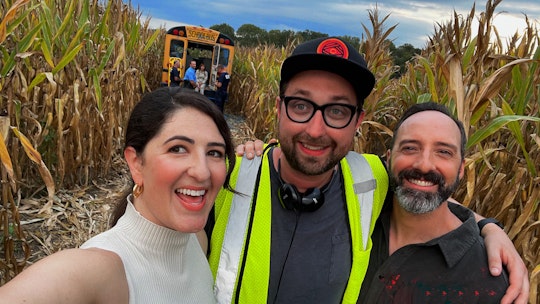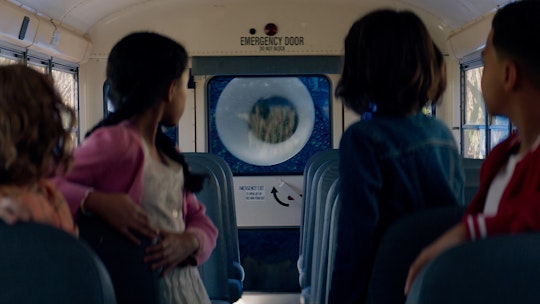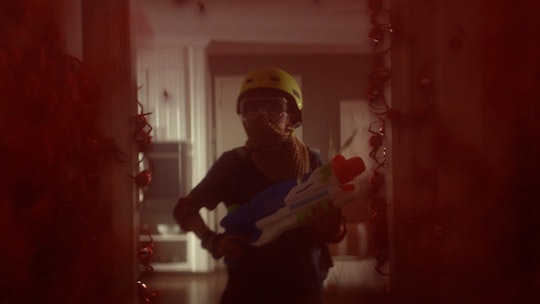
The Making of ‘SKETCH’ A behind the scenes glimpse into Seth Worley’s first feature film and how he and his team transformed simple kid’s drawings into textured 3D monsters.
What happens when a super talented writer/director also happens to be a VFX wizard? You get a crazy-good feature film that hits it on all levels. Seth Worley has written and directed major motion pictures, commercials, educational videos, and more – you may have already watched his and Daniel Hashimoto’s VFX & Chill videos. Now, he's written and directed his first feature film, “SKETCH,” a multi-genre masterpiece that highlights how monsters and unresolved trauma can go hand in hand.
We caught up with Worley to find out all about his workflow and VFX techniques.
Congratulations on “SKETCH”! What inspired you to tell this story?
Worley: When I was a kid, my sister got in trouble for drawing a picture that, in hindsight, was comically violent, but at the time was concerning enough for all parties involved that she had to see a counselor. The counselor actually commended her for making the healthy choice of expressing her anger through a drawing instead of any sort of real violence, and I remember hearing that and thinking that it was maybe the most powerful and coolest thing anyone had ever said to a child. This thing you did that made everyone nervous is evidence that you're a good person making healthy choices. So, I decided that was the kind of adult I wanted to be in a kid's life one day.
Flash forward to my daughter coming home from kindergarten with drawings and made-up stories that were - without precedent - inventively violent. Suddenly, I realized that you can believe two things at once: that art is a safe place for violence, while simultaneously believing that your daughter is a serial killer and it's somehow your fault. That tension immediately felt writable to me. I’ve wanted to make movies ever since I saw “Jurassic Park” at age 9, and here I suddenly saw this opportunity to tell a story that was part “Inside Out,” part “Jurassic Park” - and that’s how “SKETCH” was born.
How did it feel to have your film premiere at the Toronto International Film Festival?
Worley: It was such a massive honor and dream come true to premiere the film at TIFF. The audiences at TIFF bring such a palpable excitement and love for movies that’s different from other festivals, and “SKETCH” is designed to be an unabashed crowd-pleaser, so we always thought it would be the perfect place to debut it.
How did you manage to depict coping with unresolved trauma while ensuring the film remained accessible and comedic?
Worley: Like I mentioned earlier, we always saw this film as “Inside Out” meets “Jurassic Park,” and “Inside Out” is a film that’s simultaneously very funny and very heartbreaking. I think if you do your best to ground your film with honest and sincere characters who react to elevated circumstances the way any of us would, you’ll inherently find an extraordinary amount of comedy and levity in places you wouldn’t normally expect - and vice versa! If you dig deep enough into comedic situations, you’re likely to uncover meaningful truths about life and humanity. We just trusted the story and characters and focused on everything that inspired us.
How did your VFX background help you incorporate effects in the live-action shots?
Worley: If anything, it allowed me to say ‘we’ll fix it in post’ with a clearer understanding of what that actually meant in most cases. It also helped me to understand our limitations, which I think is important because so much of filmmaking involves identifying opportunities to turn your limitations into strengths. The better you understand the work a department is doing, the better you can utilize and lead them.
It’s really cool that the monsters in the film are made up of the materials they were drawn in. Could you take us through the Red Giant tools you used to create these material effects?
Worley: In the film, the monsters are composed of whatever they were drawn with, so some are made of crayon wax and get melty when exposed to heat, while others are made of chalk so they generate colored dust clouds in their wake, and so on.

We wanted them to always have some level of material-related debris or atmosphere coming off of them - be it glitter, chalk powder, or crayon wax. Having those organic elements helped them feel tactile and real.
One of the monsters, Dave, is covered in glitter, so when he roars, he spews glitter everywhere and there’s always a bit of it falling off of him as he moves. As a result, his appearance tends to be preceded by glitter falling in the air, which felt like a fun Spielbergian device to build anticipation. All of that glitter was created using Trapcode Particular.
Additionally, for any shots where we might want to add additional dust elements on top of the vendors’ final deliveries, I often used Trapcode Particular or stock elements from ActionVFX and composited them using Supercomp. It has a great Blur Behind tool that helps you integrate elements like smoke or dust more convincingly than other methods.

How were the monsters modeled in Cinema 4D?
Worley: Mark Lundgren modeled our monsters in Cinema 4D. We wanted to make sure the monsters retained that scribbly and messy aesthetic of kids' drawings, but it was important that they never feel ethereal or fantastical, nor should they ever feel 2D or cel-shaded. To achieve this, Mark modeled them as collections of Cloners populated with sprite cards of a library we built of crayon scribbles. This allowed the monsters to retain their scribbly hand-drawn aesthetic without sacrificing their dimensionality and tactility.

The film contains a lot of excellent VFX work. How did you collaborate with various teams to create a cohesive look for the film?
Worley: One of the first things you do is hire a great VFX supervisor with unreasonably high standards, and you ensure that his name is Dan Sturm. Then you collaborate with some truly incredible vendors - in our case, that was Zero VFX, Mavericks VFX, Fin Design + Effects, Od Studios, IV Studio (now Hey Neighbor), Twisted Mountain Animation, and Danger Pixel. Then you ensure that every shot is just absolutely filled with dust. Finally, you listen to Dan when he tells you to tone it down on the dust.
What obstacles did you run into during post-production?
Worley: There was a brief period during post-production when the powers that be were starting to wonder why we were holding the visual effects to such a high standard. Since the monsters were based on kids’ drawings, shouldn’t there be more room for error and a cruder aesthetic since they weren’t full flesh and blood creatures? But once our internal team was able to finish the first monster attack sequence in full (thanks in large part to Cinema 4D, Redshift, and Trapcode Particular), they were able to see that we were trying to do something bigger and more inventive than they may have envisioned, and they were fully on board.
How did you use Redshift to finish off the final renders?
Worley: All of the Dave shots were rendered using Redshift. Mark Lundgren was able to include a ton of compositing data for us in the AOVs so that we had a ton of control when integrating elements like dust and glitter - of which there was quite a lot.
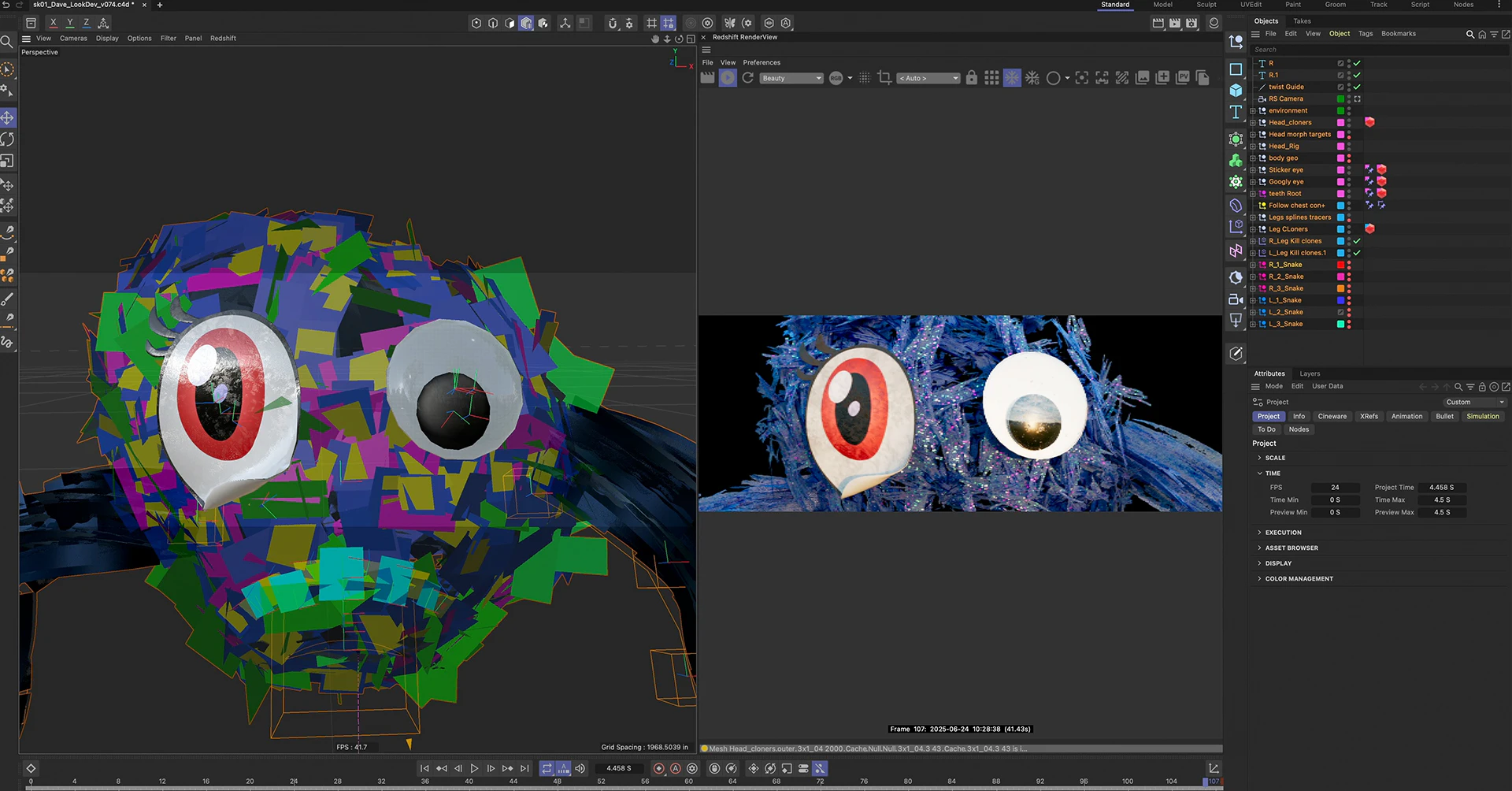
Any plans for future feature films?
Worley: There are several things in the works - none of which I can talk about yet – but I’m excited for the world to finally get to see this one. It took six years to get financing and two years to make, so it’s surreal that people will finally get to experience it in theaters Aug. 6.!
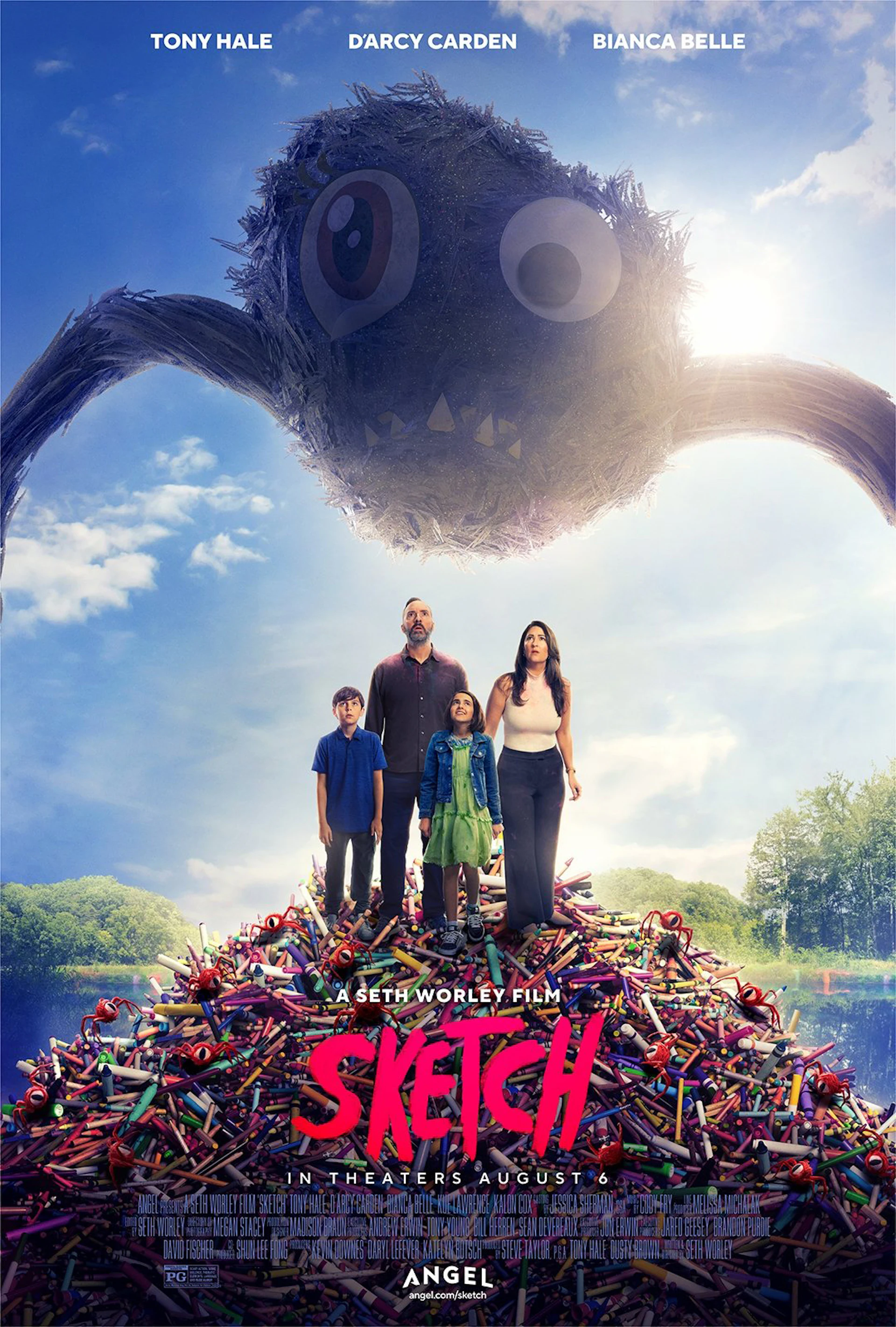
Nadia Yangin is a copywriter at Maxon.





